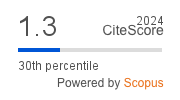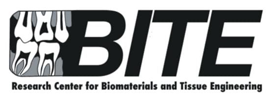Variation and contact time of protective surface coating on fluoride release and recharge from glass ionomer restoration
Downloads
Background: Glass ionomer cement (GIC) is an effective restorative material known for its ability to release and recharge fluoride over an extended period. The application of fluoride-containing varnish and acidulated phosphate fluoride (APF) gel can substantially enhance the fluoride release and recharge properties of GIC. These additional treatments provide an extra source of fluoride, contributing to the long-term protection and strengthening of teeth. Purpose: This study aims to investigate the fluoride release and rechargeability of a tooth-colored restorative material (glass ionomer) over different time periods following the application of fluoride varnish (F varnish) and APF gel. Methods: Seventy-two specimens were prepared and divided into three groups, each further categorized into four subgroups based on the type and duration of fluoride application. Fluoride release was measured at 24 hours, 1 week, and 1 month, while fluoride recharge was evaluated after the application of F varnish and APF gel. Results: There was no significant difference in fluoride release between 24 hours and 1 week, but a significant decrease was observed after 1 month. The highest fluoride release occurred at 24 hours, while the lowest was recorded at 1 month. After fluoride recharge, there was a significant increase in fluoride release. Conclusion: Fluoride release from glass ionomer restorations was highest at 24 hours, and the rechargeability was greater with a 24-hour F varnish application compared with 12 hours. APF gel demonstrated higher fluoride release than F varnish, and prolonged contact time between the restorative material and the recharging agent resulted in greater fluoride uptake.
Downloads
Bramantoro T, Mardiyantoro F, Irmalia WR, Kristanti RA, Nugraha AP, Noor TEBTA, Fauzi A Al, Tedjosasongko U. Early childhood caries, masticatory function, child early cognitive, and psychomotor development: a narrative review. Eur J Dent. 2024; 18(2): 441–7. doi: https://doi.org/10.1055/s-0043-1774326
Abdat M, Herwanda, Jannah M, Soraya C. Detection of caries and determination of treatment needs using DentMA teledentistry: A deep learning approach. Dent J. 2024; 57(1): 62–7. doi: https://doi.org/10.20473/j.djmkg.v57.i1.p62-67
Hasan F, Yuliana LT, Budi HS, Ramasamy R, Ambiya ZI, Ghaisani AM. Prevalence of dental caries among children in Indonesia: A systematic review and meta-analysis of observational studies. Heliyon. 2024; 10(11): e32102. doi: https://doi.org/10.1016/j.heliyon.2024.e32102
Zampetti P, Scribante A. Historical and bibliometric notes on the use of fluoride in caries prevention. Eur J Paediatr Dent. 2020; 21(2): 148–52. doi: https://doi.org/10.23804/ejpd.2020.21.02.10
Zafar MS, Ahmed N. Therapeutic roles of fluoride released from restorative dental materials. Fluoride. 2015; 48(3): 184–94. web: https://www.fluorideresearch.org/483/files/FJ2015_v48_n3_p184-194_sfs.pdf
Putri L, Rianti D, Harijanto E. Release of fluoride to the addition of nanoparticle zinc oxide with glass ionomer cements. Int J Pharm Res. 2020; 12(4): 1530–3. doi: https://doi.org/10.31838/ijpr/2020.12.04.216
Salmerón-Valdés EN, Scougall-Vilchis RJ, Lara-Carrillo E, Toral-Rizo VH, Velasquez-Enriquez U, Morales-Valenzuela AA. Fluoride release and recharge in conventional varnishes, compared to a giomer and a resin modified glass ionomer. J Dent Mater Tech. 2021; 10(2): 62–70. doi: https://doi.org/10.22038/jdmt.2021.44814.1331
Apriani A, Naliani S, Djuanda R, Teanindar SH, Florenthe JQ, Baharudin F. Surface roughness assessment with fluoride varnish application: An in vitro study. Dent J. 2023; 56(3): 154–9. doi: https://doi.org/10.20473/j.djmkg.v56.i3.p154-159
Munteanu A, Holban A-M, Păuna M-R, Imre M, Farcașiu A-T, Farcașiu C. Review of professionally applied fluorides for preventing dental caries in children and adolescents. Appl Sci. 2022; 12: 1054. doi: https://doi.org/10.3390/app12031054
Brzović Rajić V, Miletić I, Gurgan S, Peroš K, Verzak Ž, Ivanišević Malčić A. Fluoride release from glass ionomer with nano filled coat and varnish. Acta Stomatol Croat. 2018; 52(4): 307–13. doi: https://doi.org/10.15644/asc52/4/4
Bayindir YZ, Yildiz M. Surface hardness properties of resin-modified glass ionomer cements and polyacid-modified composite resins. J Contemp Dent Pract. 2004; 5(4): 42–9. pubmed: https://pubmed.ncbi.nlm.nih.gov/15558089/
Shetty R, Gururaj M, Shetty S, Kumar CV. Fluoride releasing and uptake capacities of esthetic restorations. J Contemp Dent Pract. 2013; 14(5): 887–91. doi: https://doi.org/10.5005/jp-journals-10024-1421
Dasgupta S, Saraswathi Mv, Somayaji K, Pentapati K, Shetty P. Comparative evaluation of fluoride release and recharge potential of novel and traditional fluoride-releasing restorative materials: An in vitro study. J Conserv Dent. 2018; 21(6): 622–6. doi: https://doi.org/10.4103/JCD.JCD_338_18
Gümüştaş B, Yaman Dosdoğru E, Güneysu S. Evaluation of mechanical properties of fluoride-releasing dental materials after multiple fluoride recharge/discharge application. Biosci J. 2020; 36(4): 1461–70. doi: https://doi.org/10.14393/BJ-v36n4a2020-47954
Şirinoğlu-Çapan B, Akyüz S, Alev B, Tacal-Aslan B, Kadir T, Yarat A. In vitro fluoride-release/recharge pattern and antimicrobial effects of current restorative materials used in pediatric dentistry. Experimed. 2020; 10(1): 7–15. doi: https://doi.org/10.26650/experimed.2020.0006
Do K-Y, Lee E-S. Preventive effects of fluoride gel application on dental caries in the permanent tooth: A systematic review of randomized controlled trials. J Dent Hyg Sci. 2019; 19(1): 9–22. doi: https://doi.org/10.17135/jdhs.2019.19.1.9
Kumari PD, Khijmatgar S, Chowdhury A, Lynch E, Chowdhury CR. Factors influencing fluoride release in atraumatic restorative treatment (ART) materials: A review. J Oral Biol Craniofacial Res. 2019; 9(4): 315–20. doi: https://doi.org/10.1016/j.jobcr.2019.06.015
Seshadri VRA, Ramakrishnan M, Dental S. Fluoride varnish – A review. J Popul Ther Clin Pharmacol. 2023; 30(10): e69–74. doi: https://doi.org/10.47750/jptcp.2023.30.10.011
Avidhianita D, Damiyanti M, Irawan B, Noerdin A. Effect of acidulated phosphate fluoride gel application on the surface roughness of resin sealant. J Phys Conf Ser. 2018; 1073: 032007. doi: https://doi.org/10.1088/1742-6596/1073/3/032007
Avasthi A, Gupta S. Advances in professionally applied topical fluoride in prevention of dental caries: a narrative review. J Dent Heal Oral Disord Ther. 2023; 14(1): 10–3. doi: https://doi.org/10.15406/jdhodt.2023.14.00587
Daryani KK, S PK, Neeraj Deshpande A, Dinesh Bargale S, Khoja M, Patel KS. Comparative evaluation of serum iron level, serum ferritin level and salivary pH with dental caries in children with iron deficiency anaemia- An observational cross-sectional study. J Adv Med Dent Sci Res. 2019; 7(4): 16–8. web: https://www.jamdsr.com/htmlissue.php?id=2323
Barakat I, Abdelrahim R. Fluoride release from RMGIC versus Giomer concerning different curing devices at different time intervals (in vitro study). Egypt Dent J. 2022; 68(1): 77–85. doi: https://doi.org/10.21608/edj.2021.103398.1851
Nassar HM, Platt JA. Fluoride release from two high-viscosity glass ionomers after exposure to fluoride slurry and varnish. Materials (Basel). 2019; 12(22): 3760. doi: https://doi.org/10.3390/ma12223760
Singh H, Rashmi S, Pai S, Kini S. Comparative evaluation of fluoride release from two different glass ionomer cement and a novel alkasite restorative material – An in vitro study. Pesqui Bras Odontopediatria Clin Integr. 2020; 20: 1–6. doi: https://doi.org/10.1590/pboci.2020.019
Abdallah A, Elshehawy T, Ibrahim H. Fluoride release and recharge behavior of bioactive glass ionomer cements using ion chromatography. Egypt Dent J. 2019; 65(1): 399–406. doi: https://doi.org/10.21608/edj.2019.72715
Takahashi K, Emilson C, Birkhed D. Fluoride release in vitro from various glass ionomer cements and resin composites after exposure to NaF solutions. Dent Mater. 1993; 9(6): 350–4. doi: https://doi.org/10.1016/0109-5641(93)90055-U
Nagi SM, Moharam LM, El Hoshy AZ. Fluoride release and recharge of enhanced resin modified glass ionomer at different time intervals. Futur Dent J. 2018; 4(2): 221–4. doi: https://doi.org/10.1016/j.fdj.2018.06.005
Copyright (c) 2025 Dental Journal

This work is licensed under a Creative Commons Attribution-ShareAlike 4.0 International License.
- Every manuscript submitted to must observe the policy and terms set by the Dental Journal (Majalah Kedokteran Gigi).
- Publication rights to manuscript content published by the Dental Journal (Majalah Kedokteran Gigi) is owned by the journal with the consent and approval of the author(s) concerned.
- Full texts of electronically published manuscripts can be accessed free of charge and used according to the license shown below.
- The Dental Journal (Majalah Kedokteran Gigi) is licensed under a Creative Commons Attribution-ShareAlike 4.0 International License

















